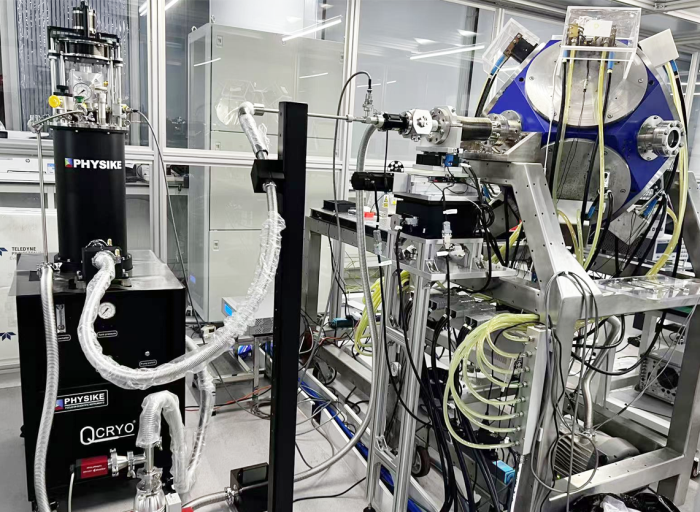
Scryo-S-400 UHV Cryogenic Insert
The Scryo® S-400(abbreviated as S-400) is an ultra-high vacuum compatible cryogenic insert designed for experiments requiring ultra-high vacuum environments such as ARPES, STM, AFM, IR, magneto-optical, ferromagnetic resonance and high-energy physics. It is made of ultra-high vacuum materials and processes to allow for high temperature baking.
The S-400 cryogenic insert transfers liquid helium to the vaporizer of the cryostat for efficient vaporization using an efficient adiabatic transfer piping, which can be used for variable temperature and temperature control in the temperature range of 1.8K-500K. The built-in heater is isolated from the sample space to avoid the effect on the vacuum of the UHV chamber when the heater is working. The S-400 cryogenic insert is characterized by light weight, fast cooling speed, etc. It can be mounted in any direction, with a standard CF35 conflat flange, and other specifications can be optionally added to facilitate the integration with the user-supplied UHV chamber, and the length from the conflat flange to the cold finger can be customized.
The S-400 cryogenic insert offers a wide range of options such as various UHV electrical feedthroughs, 800K high temperature, UHV translation stage, pumped differential rotary stage, tilt stage, and UHV calibrated thermometers, as well as an optional UHV vacuum shroud with optical window.
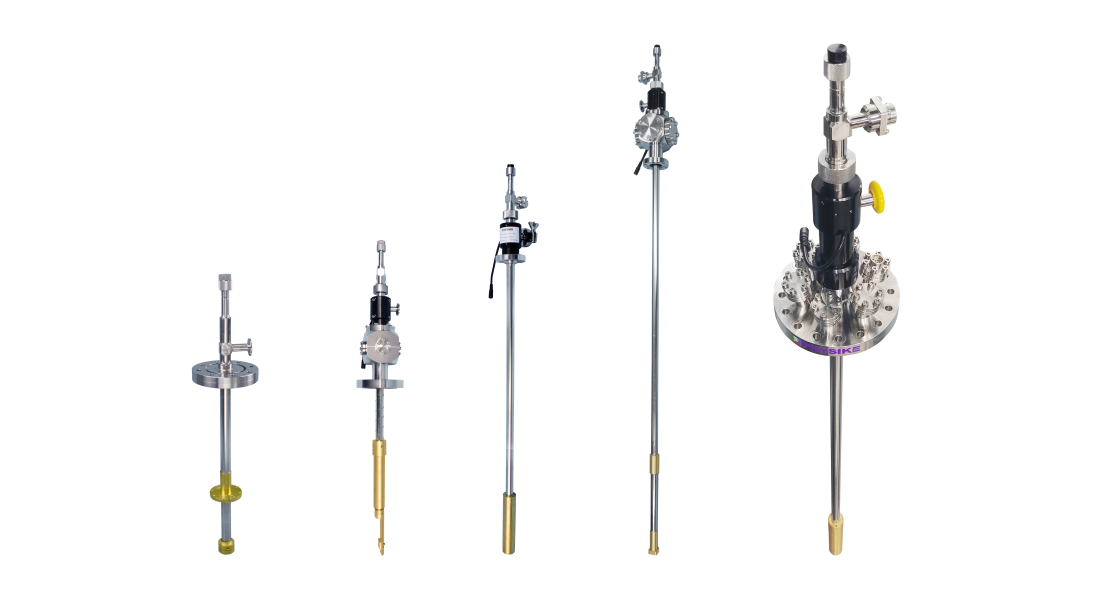
Typical S-400 UHV cryogenic inserts (for reference only)
Typical Characteristics | |
Sample Environment | UHV |
Nominal Temperature Range | 1.8K-500K(Note: pumping is required for 4.5K or lower) |
Nominal Temperature Stability | Better than ±25mK |
Operating Direction | Arbitrary |
Typical Applications | ARPES,STM, AFM, infrared, magneto-optical, ferromagnetic resonance and high energy physics |
Note | S-400 and Qcryo form a closed-loop dry cryogenic system without liquid helium consumption. |
Optional Configurations | |
UHV electrical feedthroughs(multi-pin, BNC, SMA, etc.) | CF63, CF100, CF150, etc. |
Lap joint flange | 90º electrical elbow and outlet elbow |
Linear actuator, rotary stage, tilt stage | Motor-driven rotary stage |
Custom cold finger lengths | Custom liquid helium transfer piping lengths |
Dual cold shields for lower temperature | 800K high temperature |
UHV vacuum shroud | UHV optical window |
Closed-loop dry cryogenic system with Qcryo without liquid helium consumption | |
The S-400 cryogenic insert/cryostat is combined with a Helium Cycle Cryogenic System (Qcryo®) to form a dry, closed-loop cryogenic system (Qcryo-S-400) that does not consume liquid helium, with a minimum temperature of:<2.5K (option: <1.8K) and ultra-low vibration characteristics.
Installation Examples
▇ S-400 Cryostat
UHV vacuum chamber with integrated 3D translation stage and motor-driven differential rotary stage with multiple infrared optics windows for use with a Bruker 80V vacuum Fourier spectrometer for experiments such as infrared reflectance.
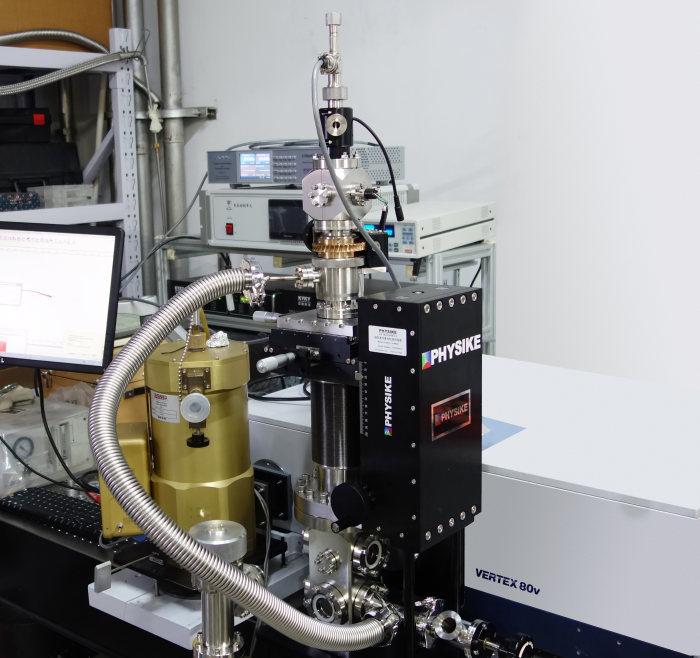
▇ Qcryo-S-400 Dry Closed-Loop UHV Cryogenic System
Applied to STM for picometer resolution.
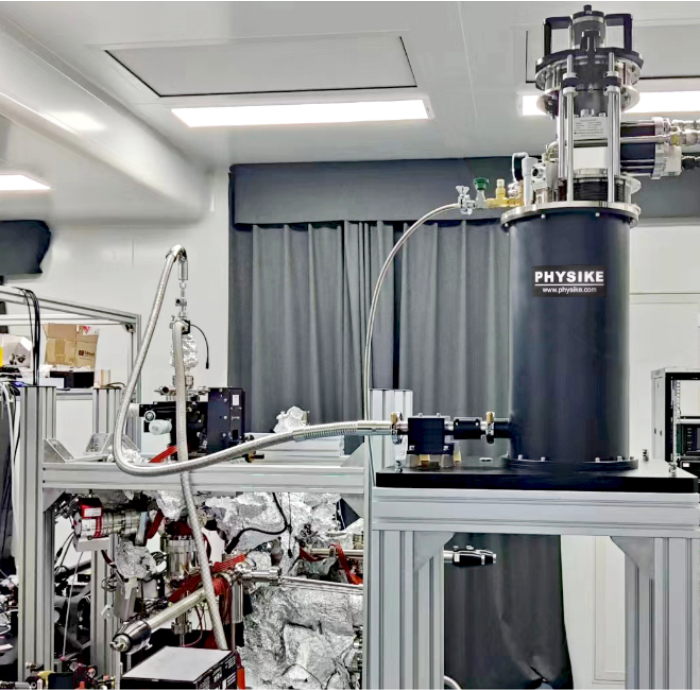
▇ Qcryo-S-400 Dry Cryogenic System
For diamond AFM spectrometer to realize nanoscale high spatial resolution and ultra-high sensitivity detection at low temperature and strong magnetic field.
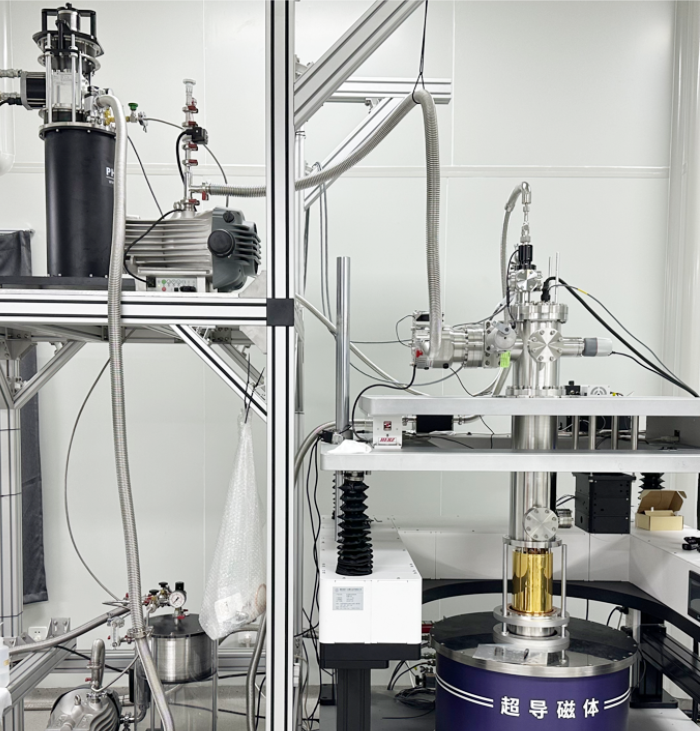
▇ Qcryo-S-400 Dry Closed-Loop UHV Cryogenic System
Matching Angle-Resolved Photoelectron Spectroscopy (ARPES) for the study of strongly correlated electronic systems such as high-temperature superconducting materials, colossal magnetoresistance materials, and heavy fermionic materials.
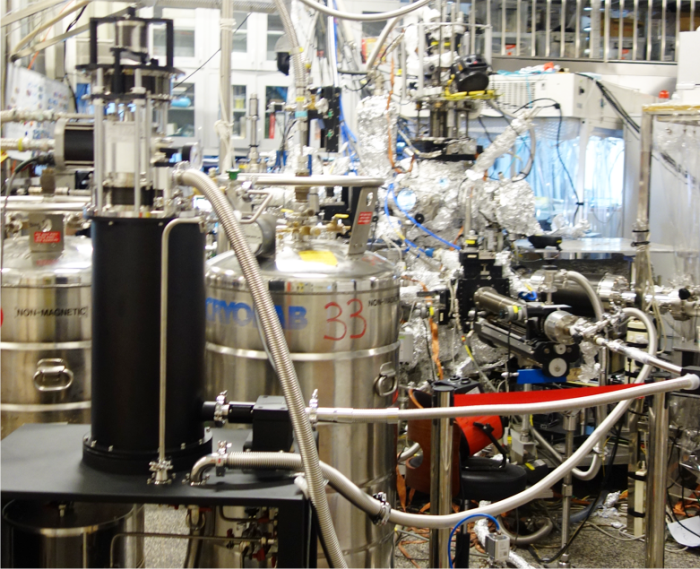
▇ Qcryo-S-400 Dry Closed-Loop UHV Cryogenic System
Matching highly sensitive time-resolved laser-induced infrared fluorescence spectroscopy and surface infrared absorption spectroscopy measurement systems to study the chemical kinetic processes of solid-state surface primitives, such as molecular adsorption/desorption at solid-surface interfaces, vibrational energy relaxation, energy transport, and photocatalysis, etc.
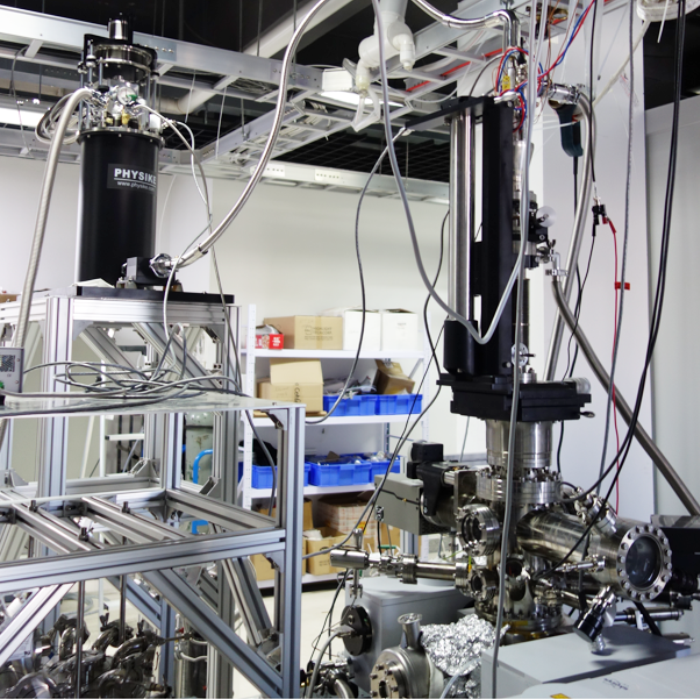
▇ Qcryo-S-400 Dry Closed-Loop Cryogenic System
Matching multi-axis magnets for ferromagnetic resonance experiments at cryogenic temperature.
